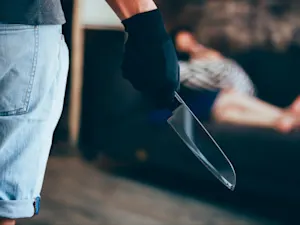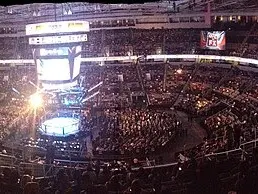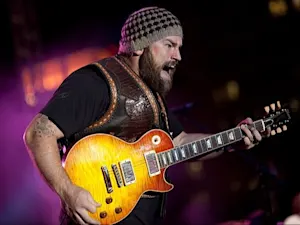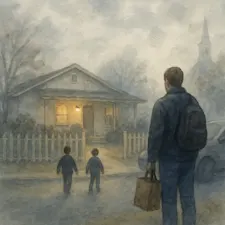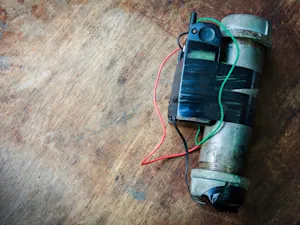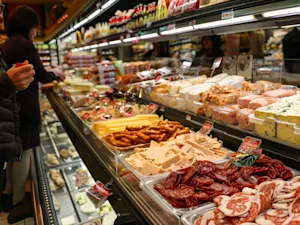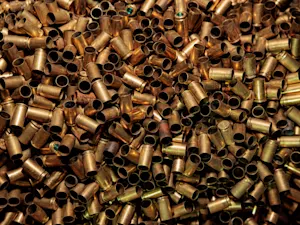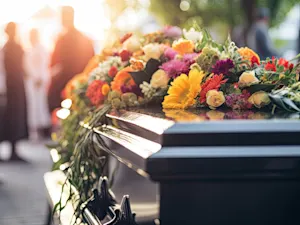
What Really Happened at the Jonestown Massacre?
Jonestown Cottages. Photo taken by FBI agents in Jonestown following the Jonestown massacre of November 18, 1978. Photo courtesy of the Federal Bureau of Investigation. Public domain.
Imagine a quiet, remote jungle in Guyana where the sounds of nature should have been the only thing breaking the silence. Instead, on Nov. 18, 1978, it became the backdrop for one of the most tragic events in modern history — more than 900 people, led by the enigmatic and increasingly paranoid Jim Jones, lost their lives in what is now known as the Jonestown massacre. But what exactly happened, and how did things go so terribly wrong? Let's break it down.
What Was the Jonestown Massacre?
In simple terms, the Jonestown massacre was the tragic result of Jim Jones' control over his followers in the Peoples Temple. Jones had moved his congregation from San Francisco to Guyana, promising them a utopian community called Jonestown. By 1978, more than 900 American citizens were living there, believing they were part of something special. But things weren't as perfect as Jones made them out to be.
Why Did People Follow Jim Jones?
Jim Jones wasn't just any leader — he was a master manipulator. He knew how to talk the talk, promising a world free from racism and inequality. Jones was charismatic, claiming he could heal the sick and lead his followers to a better life. But underneath all that charm, he used fear, lies, and isolation to keep his followers in line. Once they were living in the jungle, far from home, Jones had them exactly where he wanted them.
 Jim Jones, 1977. Photo courtesy of Nancy Wong, under CC BY-SA 4.0.
Jim Jones, 1977. Photo courtesy of Nancy Wong, under CC BY-SA 4.0.
Why Did Jones Choose Guyana?
Jim Jones selected Guyana as the location for idyllic Jonestown for two reasons: The country's government shared his socialist ideas, and the isolated setting insulated the community from the prying eyes of U.S. authorities. Jones believed he could create his utopia there without interference - and for a while, he did just that. But the isolation also meant that when things went wrong, no one would be around to help.
How Did the Massacre Start?
U.S. Congressman Leo Ryan decided to visit Jonestown in November 1978. He'd heard rumors that things weren't as rosy as Jones claimed, and he wanted to see for himself. Ryan arrived on Nov. 17 with a group of journalists and concerned relatives. At first, everything seemed fine, but the next day, some residents asked to leave with Ryan's group. That's when things went off the rails.
What Happened at the Airstrip?
As Ryan and his group prepared to leave Jonestown on Nov. 18, armed members of the Peoples Temple - sent by Jones - ambushed them at the Port Kaituma airstrip. Ryan and four others were killed in the attack. Back at Jonestown, Jones decided it was time for what he called "revolutionary suicide."
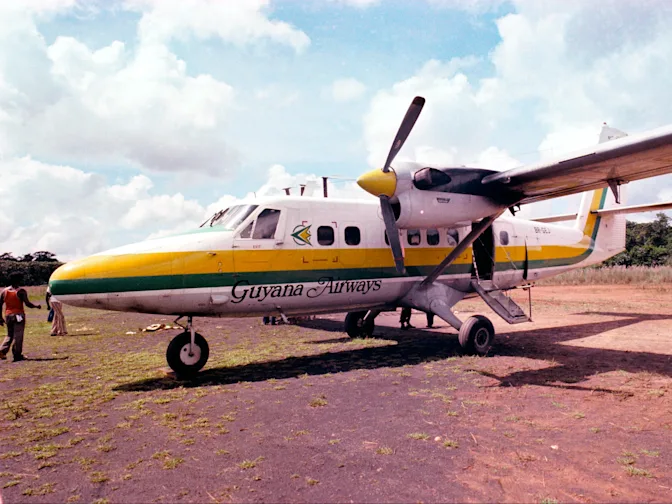 Guyana Airways plane, photo taken by FBI agents in Jonestown following the Jonestown massacre of November 18, 1978. Photo courtesy of the Federal Bureau of Investigation. Public domain.
Guyana Airways plane, photo taken by FBI agents in Jonestown following the Jonestown massacre of November 18, 1978. Photo courtesy of the Federal Bureau of Investigation. Public domain.
How Did Jones Convince His Followers to Poison Themselves?
As the news of the ambush at the airstrip reached Jonestown, the atmosphere grew tense. Jones, his voice trembling with a mix of fear and madness, gathered his followers in the central pavilion. According to Rolling Stone, he told the once vibrant community: "It's time to die."
Jones explained that the world outside had turned against the Peoples Temple - that their only escape from torture and persecution was to drink poison en masse.
How Exactly Did the Mass Suicide Happen?
Under Jones's orders, the community's medical staff began preparing a large container of fruit-flavored drink, laced with cyanide and sedatives. The children were the first to be given the deadly mixture - usually by their parents and nurses who, despite the horror of the act, were too deep in Jones's grip to resist.
As the cyanide took effect, the pavilion filled with the sounds of heartbreak - cries, gasps, and the frantic sobs of those realizing the finality of what was happening.
Did Everyone Follow Jones's Orders?
Not everyone went quietly. Some resisted, trying to prevent the inevitable by running or refusing to drink. A handful of followers escaped by hiding or slipping away - but armed guards, loyal to Jones, surrounded the pavilion and prevented nearly everyone from leaving.
Those who hesitated were forcibly injected with the poison, their final moments filled with fear and confusion. The cyanide acted quickly, usually within five minutes, causing convulsions, frothing at the mouth, and finally death. The once-hopeful commune became a scene of unimaginable horror, with bodies sprawled across the ground and children clutched in their parents' arms in a final, tragic embrace.
In just a few hours, more than 900 people died from drinking Jones's poison, including over 300 children.
What Ultimately Happened to Jim Jones?
As the life drained from the hundreds who had followed him to Guyana, Jones faced his own grim end. Amid the chaos he had orchestrated, Jones died from a gunshot wound to the head.
Whether he pulled the trigger himself or someone else pulled it for him remains a mystery, but one thing is certain - Jones, the man who once promised salvation, chose to escape the consequences of his actions in the most final way possible. Authorities discovered his body amid the sea of those he had led to their deaths, a stark reminder of the devastation wrought by his twisted vision.
Did Anyone Survive the Massacre?
Remarkably, amid the horror of the Jonestown massacre, about 85 people managed to survive through a combination of chance, quick-thinking and sheer luck. Here are a few of their stories:
- A group of 11 Temple members escaped by slipping away early on the morning of Nov. 18, under the guise of going on a picnic. They walked 35 miles to safety, unaware of the nightmare that would soon engulf their friends and family.
- Some survivors hid in ditches and dormitories, or simply took advantage of the confusion to disappear. For example, Temple members Stanley Clayton and Odell Rhodes managed to outwit the armed guards and slip away into the surrounding jungle.
- A few simply got lucky because they happened to be absent on that fateful day - this was the case for the Jonestown basketball team, which had traveled to compete in a game.
- In a twist of fate, an elderly woman named Hyacinth Thrash slept through the entire ordeal in her cabin, only to wake up the next morning to a scene of unimaginable devastation.
What Was the Aftermath for Survivors?
For the survivors, life after Jonestown was incredibly tough. They were left with deep emotional scars — grief, guilt and a sense of loss that would never fully go away. Many survivors had to start over from scratch, finding new jobs, homes and friends, all while dealing with the trauma of what they had lived through. And let's not forget the social stigma — being associated with the Peoples Temple painted them as outcasts, even though they were victims too.
What Can We Learn From Jonestown?
The Jonestown massacre is a chilling reminder of how dangerous a charismatic leader can be when they possess unchecked power. It shows us the importance of critical thinking and staying connected to the outside world. Most of all, it teaches us to be wary of anyone who claims to have all the answers, especially if they're asking you to leave everything behind to follow them.
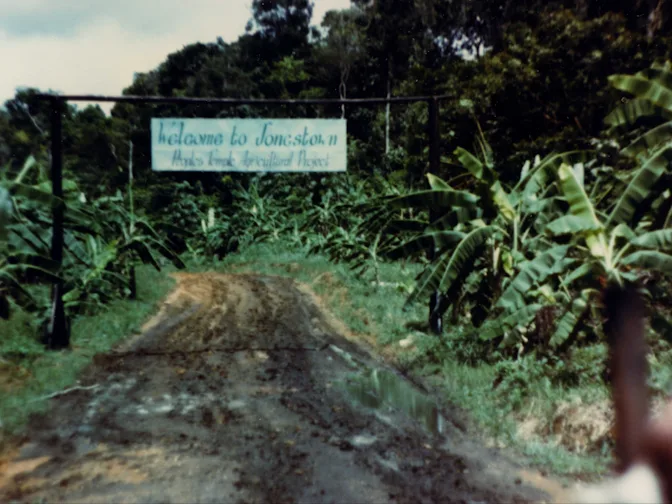 The welcome sign at the entrance to Jonestown, courtesy of the Jonestown Institute.
The welcome sign at the entrance to Jonestown, courtesy of the Jonestown Institute.
References: Jonestown: 13 Things You Should Know About Cult Massacre | What Happened During the Jonestown Massacre? The True Story of the Deadly Mass Murder in 1978 | Jim Jones | Jim Jones

